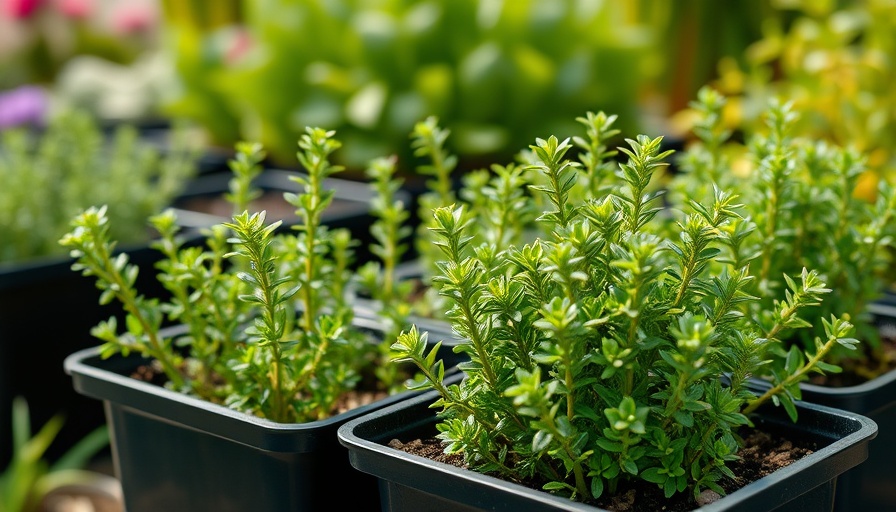
Discover the Joy of Growing Thyme
If you’ve ever brushed against a thyme plant and caught a whiff of its earthy, lemony aroma, then you know why it’s a favorite among gardeners and cooks alike. This aromatic herb is not just a staple in kitchens but also a boon for pollinator-friendly landscapes, thriving in various conditions. The best part? Propagating thyme is a rewarding endeavor that allows you to deepen your connection with nature and expand your garden without incurring extra costs.
Why Propagate Thyme?
Propagating thyme is an essential skill for any gardener eager to cultivate their herb bed. Not only does it save money, but it also offers the satisfaction of nurturing new plants from existing ones. Whether you want to expand your rock garden, fill gaps in your raised beds, or share starts with fellow gardeners, thyme propagation is quick and fulfilling.
Proven Methods for Propagating Thyme
There are several effective and straightforward methods for propagating thyme: through cuttings, layering, and divisions. Each technique offers its own unique benefits and is well-suited for different gardening scenarios. Let’s explore these methods in more detail.
1. Taking Cuttings: A Simple and Effective Method
Taking cuttings is perhaps the most popular way to propagate thyme. Simply snip a three-inch piece from a healthy stem, ensuring you include some fresh growth at the tip. Remove the lower leaves and place your cutting insoil. Maintain moisture and keep it in a warm area—soon, you’ll see roots developing!
2. Propagating by Layering: Patience Pays Off
Layering is another effective method, where a stem still attached to the parent plant is encouraged to root in the soil. This method takes longer but can be very rewarding. Simply bend a low-hanging branch toward the ground and cover a section of it with soil—keep the tip exposed to continue growing. In a few months, you can sever it from the parent plant to transplant.
3. Dividing Established Clumps: Maximize Your Harvest
Dividing mature thyme plants can instantly multiply your herb stock. This method works best during early spring or fall, ensuring the roots recover before temperature extremes. Carefully dig up your thyme, separating the roots into smaller clumps, and re-plant them in well-drained soil. Their resilience will reward you with lush new growth.
Timing Your Propagation: When Is Best?
The best time to propagate thyme is during its active growing season, from mid-spring through early summer. This timing increases your chances of success as the plant is focused on growth, but it’s also good to avoid periods of drought or excessive heat. Aim for cool and moist weather, especially when layering or dividing plants.
Transplanting Care: Ensuring Growth and Success
After propagating, it’s crucial to provide your new thyme plants with care to ensure their success. Monitor soil moisture closely, avoiding both overwatering and drying out. Once they establish roots, you can gradually introduce them to more sunlight and nutrient-rich soil.
Gardening Projects with Thyme
Thyme is highly versatile and can complement various landscaping ideas. Its creeping varieties are fantastic for ground cover or borders in your herb garden, while upright types can add vertical interest among flower beds. You can even create a decorative container garden filled with various herbs, including thyme, to bring culinary convenience and visual appeal right to your kitchen door.
Frequently Asked Questions About Thyme Propagation
1. How long does it take for thyme cuttings to root?
Typically, you can expect thyme cuttings to root within 3-6 weeks, given the right conditions.
2. Can I propagate thyme indoors?
Yes! As long as you have bright light and controlled temperatures, thyme can thrive indoors.
Embracing thyme propagation will not only enrich your gardening adventures but also engage your senses as you nurture these fragrant plants. So why not dive in and experiment with these techniques? You may just find that thyme becomes your favorite herb to grow.
 Add Row
Add Row  Add
Add 




Write A Comment